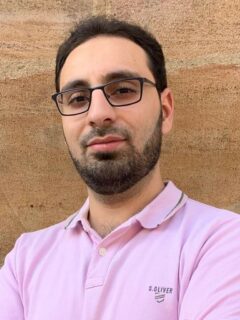Zarzor, Saeed
Mohammad Saeed Zarzor, M. Sc.
Short Bio
Muhammad Saeed Zarzour, a current PhD candidate at the Institute of Continuum Mechanics and Biomechanics (LKM), commenced his academic journey by earning a Bachelor’s degree in mechanical engineering from Damascus University, Syria, in 2013, where he achieved the first rank in his branch with honors. Following this, between 2013 and 2015, he further enriched his academic expertise by working as a teacher assistant at Damascus University.
In 2015, he was awarded a scholarship from DAAD under the “Leadership for Syria” program, enabling him to pursue his master’s studies in Germany at FAU University, specializing in Computational Engineering.
Since 2019, Muhammad has been pursuing his PhD research and is employed as a research assistant at the Institute of Applied Mechanics, and subsequently at the Institute of Continuum Mechanics. His research primarily revolves around the mechanical simulation of the fetal brain across scales, considering the interplay between the cellular process and mechanical deformation.
Publications
2023
- , , :
Exploring the role of the outer subventricular zone during cortical folding through a physics-based model
In: eLife 12 (2023)
ISSN: 2050-084X
DOI: 10.7554/eLife.82925 - , , :
Multifield computational model for human brain development: Explicit numerical stabilization
In: Proceedings in Applied Mathematics and Mechanics (2023)
ISSN: 1617-7061
DOI: 10.1002/pamm.202300288
2021
- , , , , :
A two-field computational model couples cellular brain development with cortical folding
In: Brain Multiphysics 2 (2021), p. 100025
ISSN: 2666-5220
DOI: 10.1016/j.brain.2021.100025 - , , , , :
Exploring the interplay between cellular development and mechanics in the developing human brain
In: Proceedings in Applied Mathematics and Mechanics 21 (2021), Article No.: e202100104
ISSN: 1617-7061
DOI: 10.1002/pamm.202100104
Teaching
Computational Dynamics
Since 2023

